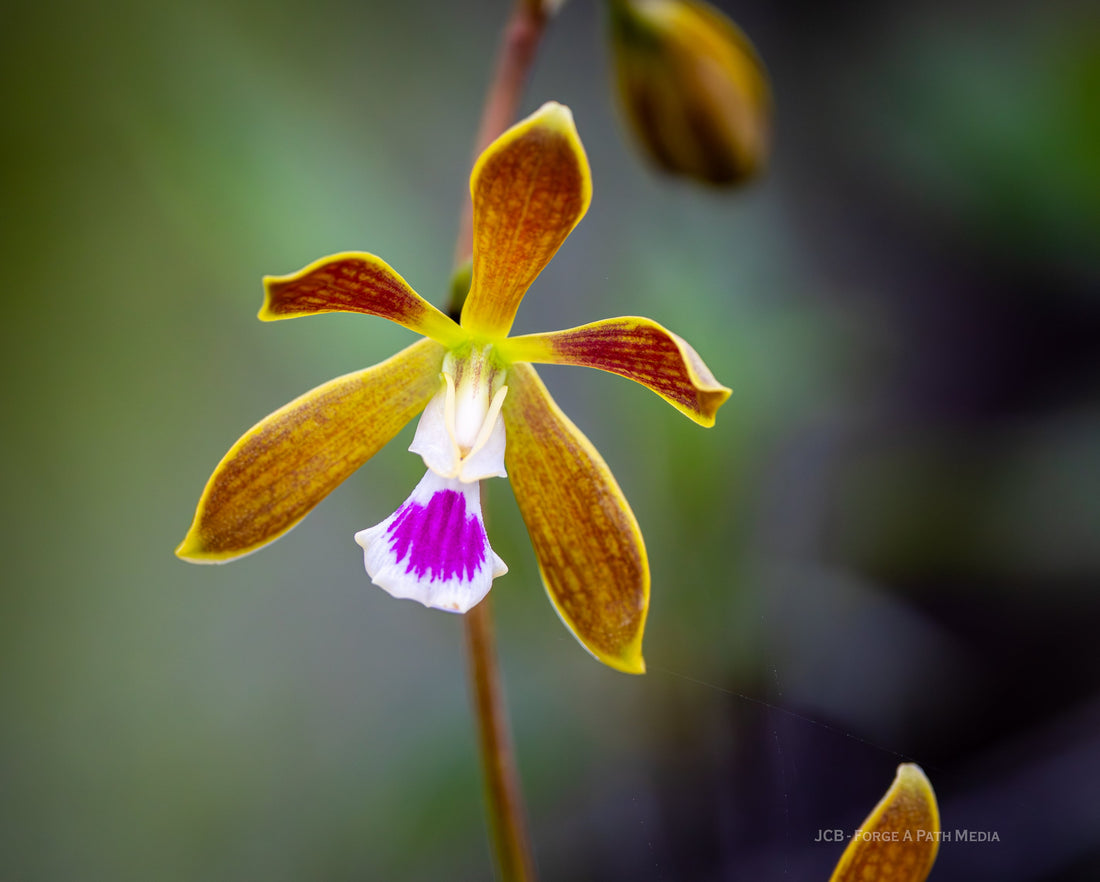
Secret Gardens in the Swamp - Exploring the Everglades in South Florida
Share
When most people think of the Everglades, their minds drift to slow-moving water, sawgrass prairies, and if you spot them, the glint of light in an alligator’s eye. But look up. High above the water and shadows, a quieter world thrives — a secret garden suspended in the trees.

I went in searching for wildlife and started noticing the incredible plants blooming and growing on the cypress trees. Exotic but familiar; it's almost unbelievable that these secret gardens exist naturally in South Florida.
This is the realm of epiphytes — air plants that don’t grow in soil, but instead perch on the limbs and trunks of trees. These include delicate ferns, radiant bromeliads, and elusive orchids, each one a marvel of resilience and adaptation.

I started my summer journey in search of the American crocodiles that live on the coast of South Florida, and on my way home, feeling defeated from not finding the crocodiles on the Gulf Coast, I stopped by Corkscrew Swamp Sanctuary. I had heard how beautiful this place was and a must-see when you’re in the area.

There’s a 2.5 miles boardwalk through 4 different habitats, and while the sun was getting high and the air hot and humid, the cover of the trees in the swamp made it feel a tad cooler. I was searching high and low for wildlife, but the sight of air plants, bromeliads, and ferns were starting to spark my creativity. The resurrection ferns were covering almost available branch in the place, and then I started to see the orchid plants growing on the trees. On the edge of the forest, where the landscape was starting to open up and more sunlight was available, the native hibiscus plants were opening their giant flowers.
The plants began to steal the show.

The perception of swamps was that they are dirty dangerous places that need to be drained and developed on for human use. But when you see them up close and notice all the magic and beauty growing on them, you’ll start to appreciate the necessity for the swamps, wetlands, and marshes that not only do the alligators call home, but the graceful orchids do, too.


Ferns: The Feathered Survivors
Like nature’s lace, ferns drape from branches and tuck themselves into bark crevices. They may look fragile, but these ancient plants have been around since the age of dinosaurs. In the Everglades, you might spot the resurrection fern, named for its ability to look dead during dry spells, only to unfurl lush and green again with the next rain. These ferns don’t harm the trees — they borrow space and sunlight, catching water and nutrients from the air.

Bromeliads: The Rain-Catchers
Then there are the bromeliads, flamboyant cousins of the pineapple, with leaves arranged like chalices. These natural cups collect rainwater and fallen leaves, becoming miniature ponds. A single bromeliad can hold a tiny ecosystem — mosquito larvae, tree frogs, and microscopic life all sharing the same leafy bowl. Some bromeliads blaze with color, while others stay modest, but all are important players in the Everglades’ complex web of life.

Orchids: The Elusive Stars
And finally, the orchids — prized for their beauty and mystery. The Everglades are home to over two dozen native orchid species, from the dainty butterfly orchid to the ghost orchid, a rare and ethereal bloom that seems to float in midair. Orchids have a reputation for being delicate, but in truth, they are tough survivors, perfectly evolved for their treetop lives.
The trees that support these plants — bald cypress, live oak, pond apple — are vanishing from some areas, slowly choked by saltwater intrusion, development, and invasive species. And when the trees go, the sky gardens go with them.

Habitat loss is pressing down on this world from all sides. Logging and construction fragment the forest canopy. Even poaching threatens rare orchids and bromeliads, stolen to be sold far from the swamps they belong to.
What’s at risk isn’t just the beauty of a fern curling in morning mist or a ghost orchid’s rare bloom — it’s an entire network of life that depends on the treetops for survival. These plants are not just decoration. They’re habitat. They’re shelter. They’re proof that life can thrive even without soil beneath its feet.

How You Can Help
If you’re moved by the idea of a garden in the sky, there are ways to protect it:
• Support Everglades restoration projects and conservation groups.
• Never collect wild plants — especially orchids or bromeliads — from the forest.
• Volunteer for habitat cleanups and native plant restoration.
• Educate others. Sometimes all it takes is someone saying “look up” to change what we value.
The next time you find yourself walking a boardwalk trail in Big Cypress or gliding under a cypress dome in a boat, take a moment to peer into the trees. There’s a world above, humming with quiet, green life — a garden that grows in the sky, patiently waiting for us to notice and protect it.
